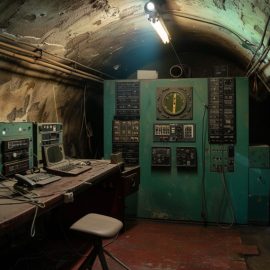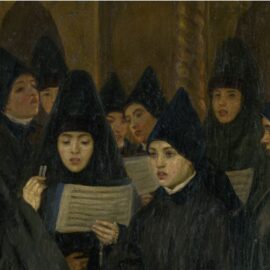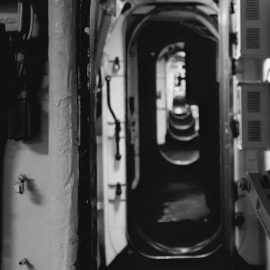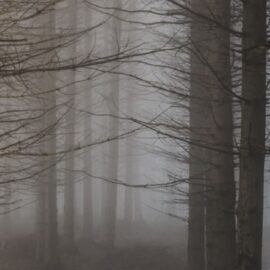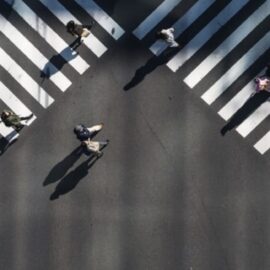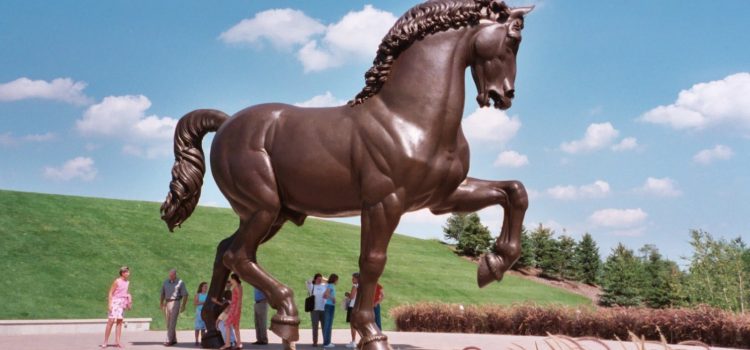
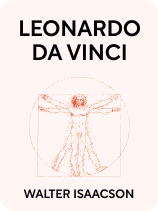
This article is an excerpt from the Shortform book guide to "Leonardo da Vinci" by Walter Isaacson. Shortform has the world's best summaries and analyses of books you should be reading.
Like this article? Sign up for a free trial here.
Did Leonardo da Vinci have unfinished paintings? Why couldn’t he finish all of his projects?
In his biography of the artist, Walter Isaacson explains that Leonardo da Vinci’s perfectionism and lack of discipline were his biggest flaws. These flaws prevented him from finishing two projects: “The Adoration of the Magi” and his horse monument.
Let’s take a look at Leonardo da Vinci’s unfinished painting and monument.
An Element of Leonardo’s Genius: Flaws
According to Isaacson, an element of Leonardo’s genius was the flaws that humanized him and gave his life and work a unique edge: perfectionism and a lack of discipline. The key result of his flaws were Leonardo da Vinci’s unfinished paintings, a variety of engineering projects he designed but never completed, and several treatises he never published. We’ll explore two of Leonardo da Vinci’s unfinished paintings and monuments: “The Adoration of the Magi,” and the horse monument.
“The Adoration of the Magi”
In 1481, Leonardo da Vinci began working on a painting he would remain unfinished: “The Adoration of the Magi.” Despite it being unfinished, Isaacson explains that Leonardo’s preparatory drawings (one of which you can see here) show that he was on his way to accomplishing something great:
1. He applied his studies of optics to the careful design of perspective, including the vortex that formed around the central figures: the Virgin and the child Christ. (Shortform note: Leonardo was fascinated by vortices. He found the shape in the movements of water, air, and blood—centuries before scientists could use advanced technology to identify it.)
2. He applied his talent for metaphor. The background showed a pagan temple being rebuilt, a metaphor for Christianity destroying Roman paganism and creating a new culture. (Shortform note: Experts argue that the metaphor goes deeper. The temple represents peace, while the battle on horseback in the background represents war. The palm tree in the middle symbolizes Christ’s suffering as the path from conflict to peace.)
3. He applied his talent for narrative. Through their actions, the characters surrounding the Virgin and Christ are telling the story of the epiphany: the moment they realized Christ was the child of God. (Shortform note: An important element of this narrative is the presence of two characters in the foreground, one in each corner of the drawing, looking out and gesturing with their hands to invite people to join in the moment of epiphany.)
Isaacson argues that Leonardo might have stopped painting because he imagined something more perfect than he could accomplish. There were over 30 characters in the painting, and each one had to cast shadows on the other 29. Likewise, each person’s emotions and actions had to be coherent with the others’. (Shortform note: When Leonardo failed to complete his commission, Filippino Lippi took it over. His work clearly takes inspiration from Leonardo’s preparatory drawings, but lacks the optics knowledge to ensure that each character would affect the light and shade on the characters surrounding them.)
The Horse Monument
In 1489, Duke Ludovico of Milan commissioned Leonardo to build a bronze monument in honor of his father, but Isaacson reports that both Leonardo’s creative process and Ludovico’s change of heart conspired to leave the work unfinished. Still, the commission elevated Leonardo to one of the duke’s favored artists. (Shortform note: Although Leonardo couldn’t finish his project, Nina Akamu finally brought his plans to life in 1999. You can see it here today.)
It was a challenging project, and Isaacson explains that Leonardo made it even more ambitious:
1. He planned to make the monument at least 23 feet high, almost two times taller than similar monuments Verrocchio and Donatello had created. (Shortform note: In fact, Leonardo advertised the monument as “the largest equestrian monument in the world.”)
2. He became fascinated with equestrian anatomy and decided to dissect a horse before he designed one. Through those studies, he even produced a treatise on horse anatomy and came up with systems to make stables more comfortable for horses (Shortform note: You can see part of Leonardo’s comparative studies of horse and human anatomy here.)
3. Usually, large bronze monuments were cast into separate pieces, then put together for the finished product. Leonardo, being a perfectionist, decided his monument would be cast in one piece. To achieve this, he devised a complex engineering system and made several experiments to find the right method and materials. (Shortform note: Leonardo’s plan to cast the monument in one piece didn’t pan out. Akamu, who built the monument in 1999, cast the monument into several pieces before melting it together.)
Unfortunately, Leonardo took too much time to make progress. Isaacson explains that, right as Leonardo was finally getting ready to cast the final monument, a war broke out. In 1494, France invaded Italy and Ludovico decided to use the bronze set aside for the monument to build cannons instead, in preparation for the imminent arrival of the French in Milan. (Shortform note: Leonardo held on to hope that he would at some point finish the monument, but that hope was finally quashed when Ludovico lost to the French and fled Milan in 1499.)

———End of Preview———
Like what you just read? Read the rest of the world's best book summary and analysis of Walter Isaacson's "Leonardo da Vinci" at Shortform.
Here's what you'll find in our full Leonardo da Vinci summary:
- A detailed look into the life, accomplishments, and struggles of Leonardo da Vinci
- Lessons from his life and work that you can apply to your own life
- What set Leonardo apart from other artists at the time

